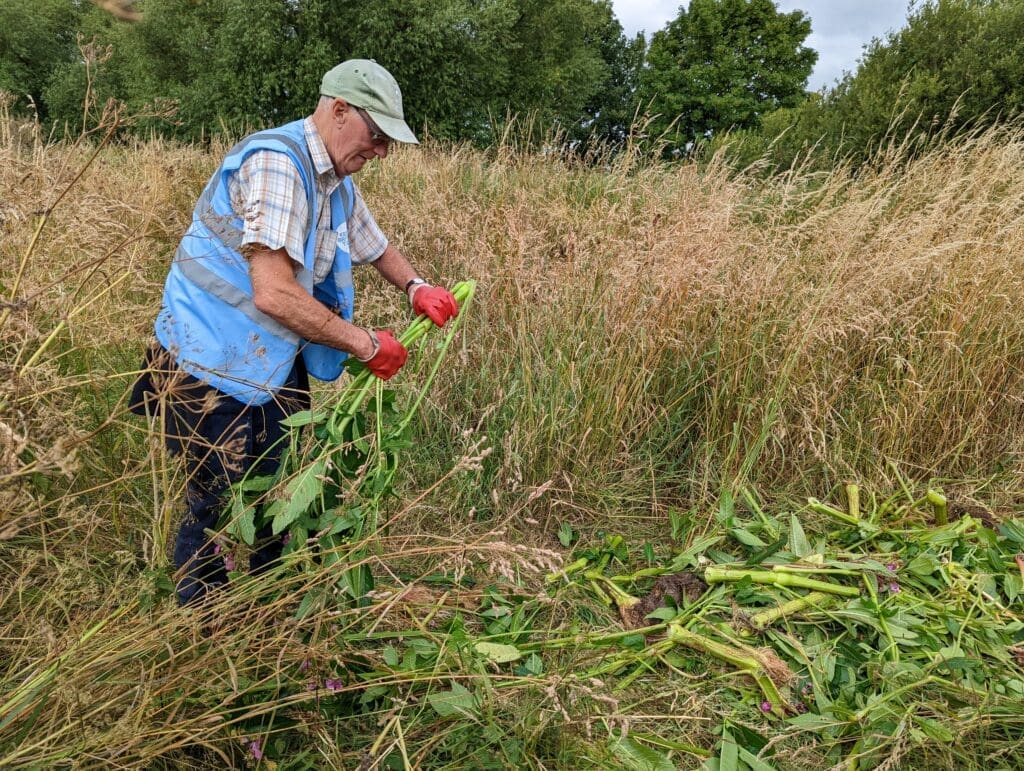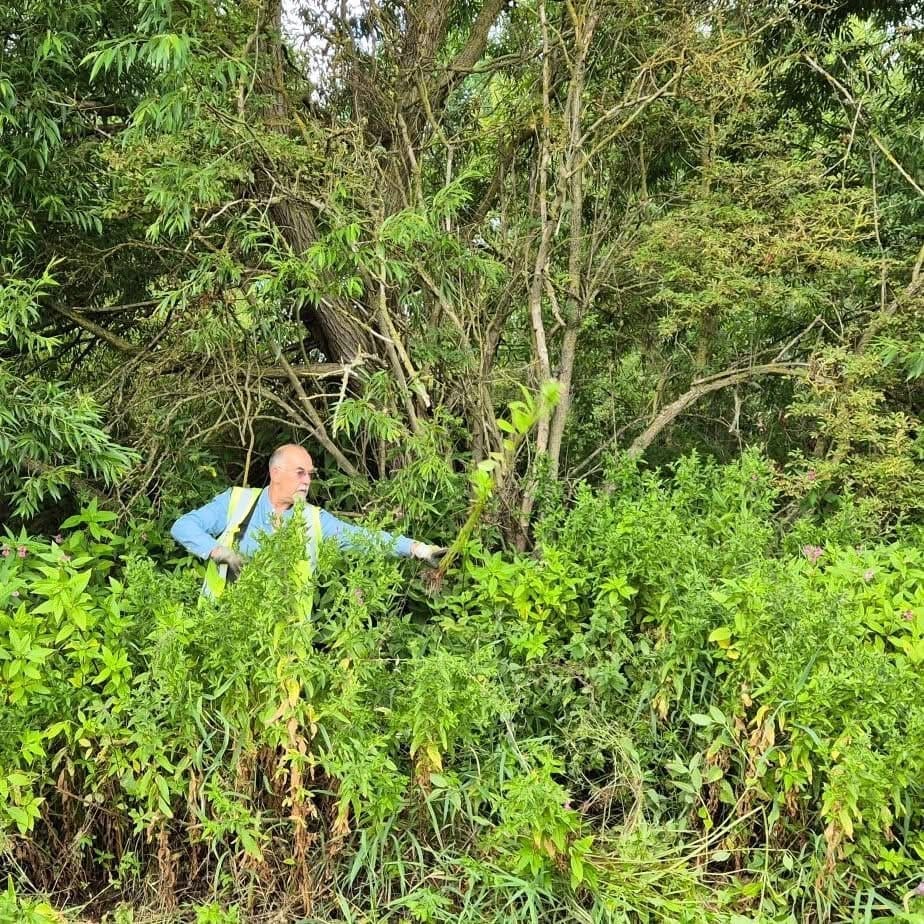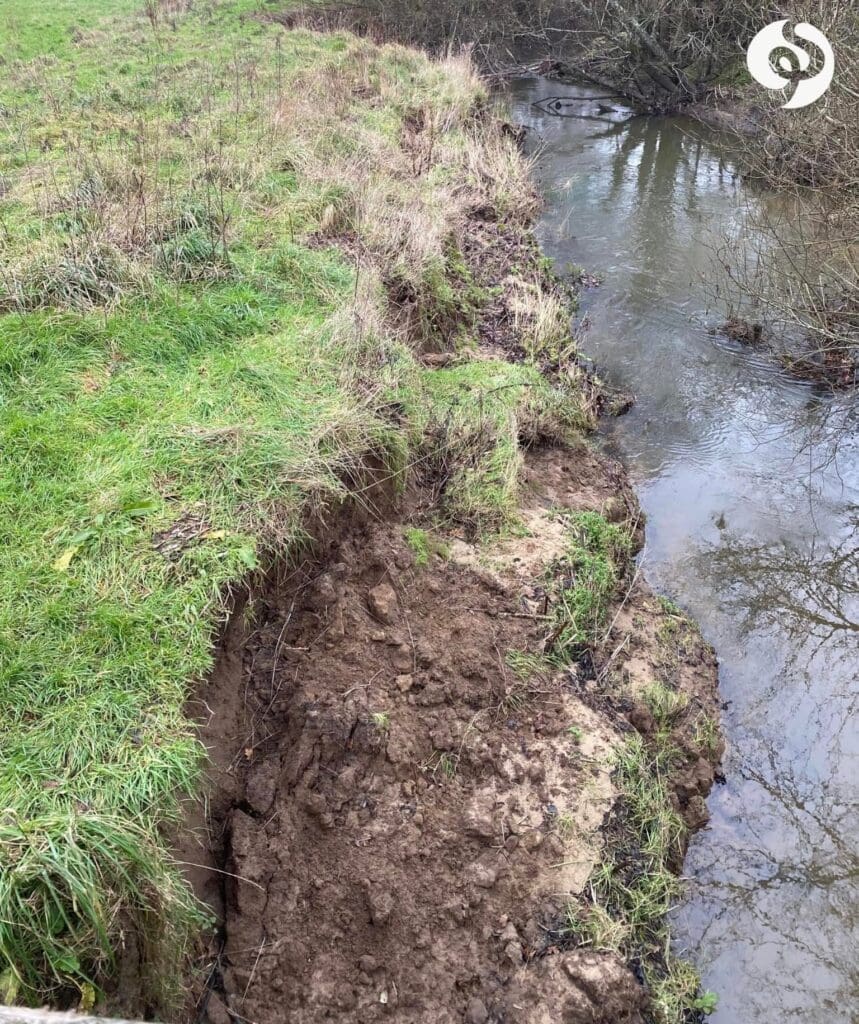A biological trial to tackle one of the UK’s most pervasive and iconic invasive species has shown early success, said Yorkshire Wildlife Trust.
As reported in Towpath Talk last month, working parties around the country have been balsam bashing this summer – removing Himalayan balsam from our riverbanks. Recognisable for its pink flowers, it has rapidly become one of the UK’s most invasive weed species and is found extensively along riverbanks, road and rail routes. The plant can cause erosion along riverbanks and grow to heights of up to three metres, smothering all other native plant species in the area.

As a result, controlling the spread by manually removing plants is a labour-intensive process and every summer, teams of hardy volunteers gather to fight the perpetual threat. Yorkshire Wildlife Trust has reported that this year, it has spent 700 hours balsam bashing over the course of two months. But there is an alternative method of biological control which has now been trialled at sites in the county through collaboration with CABI, the National Trust and Yorkshire Water.
It involves the release of rust fungus, a natural enemy of the plant found in its native India and Pakistan. Releases happened during summer 2024 and the rust successfully survived the winter months, naturally reinfecting seedlings this year – meaning it has the long-term potential to help control the plant naturally.

Elliot Baxendale, project officer at the trust, said: “We spend a lot of time managing Himalayan balsam infestations both on and off our reserves, a difficult task given its sheer quantity and how hard it is to reach. This rust fungus trial – especially now we know it has managed to survive a Yorkshire winter – represents a truly exciting and game changing opportunity for managing this highly invasive and destructive species.
“We have 193 invasive non-native species (known as INNS) in Yorkshire alone, and the annual cost of managing this in the UK is measured at about £4 billion. In fact, INNS are the second biggest cause of habitat loss worldwide after habitat destruction for development.”
One of the chosen trial sites is the National Trust-owned Hardcastle Crags, in West Yorkshire, home to a 19th century cotton mill. The trust’s countryside manager, Rosie Holdsworth, said: “We are delighted that the fungus appears to be thriving here. It has successfully overwintered and is showing real promise in helping to control Himalayan balsam. These early results are very encouraging, and we’re excited to monitor how the fungus continues to suppress balsam growth in the coming seasons.”

Dr Steph Bradbeer, lead ecologist at Yorkshire Water, added: “Invasive species cause significant impact to our environment, and we must work towards a coordinated and effective way to manage and limit their impact. The rust fungus trial presents a new opportunity to complement and enhance the control management of invasive Himalayan balsam in Yorkshire.”
Yorkshire Wildlife Trust Trust has released the rust fungus as a trial on three sites within the Calder catchment and one in the Colne catchment through funding from the National Highways Environment and Wellbeing Designated Fund as part of the Network for Nature programme. Additional funding from Defra through the Defending the Derwent Project has also seen a successful release at the trust’s Wheldrake Ings nature reserve by the Yorkshire Derwent Catchment Partnership, where there are now plans for an additional release.
With the news that the fungus has successfully overwintered at four different sites, the trust will continue to monitor the level of infection, the overall health of the plants and, crucially, whether it endures through subsequent winters.
CABI scientist Kate Pollard said “Years of extensive safety testing has ensured that the rust fungus is highly host-specific and safe for release. The rust fungus has a two-pronged attack against Himalayan balsam – infecting and killing seedlings during the spring and also by infecting the leaves of mature plants, making plants less competitive. Rust-infected leaves fall to the ground during the autumn, where it persists in the leaf litter over winter before re-infecting new seedlings the following spring.”
According to Yorkshire Wildlife Trust’s State of Yorkshire’s Nature report released last year, one in 20 of Yorkshire’s plants have become extinct and 27% of those that remain are declining.
Elliot added: “The risk is that as more common plants like Himalayan balsam to take over, we lose the incredible variety, diversity and uniqueness Yorkshire is known for. With more than 6500km of rivers found in Yorkshire and only 16% in good ecological condition, conservation projects like this are also vital to ensure Yorkshire’s habitats are the very best they can be for our wildlife.”
Anyone can help control the spread of Himalayan balsam by ensuring any footwear is cleaned after visiting or walking through an area where the invasive species is present to prevent spreading the seeds to other areas. The free INNS Mapper app is available to report sightings of invasive non-native species so local organisations can set up management plans to tackle them.





